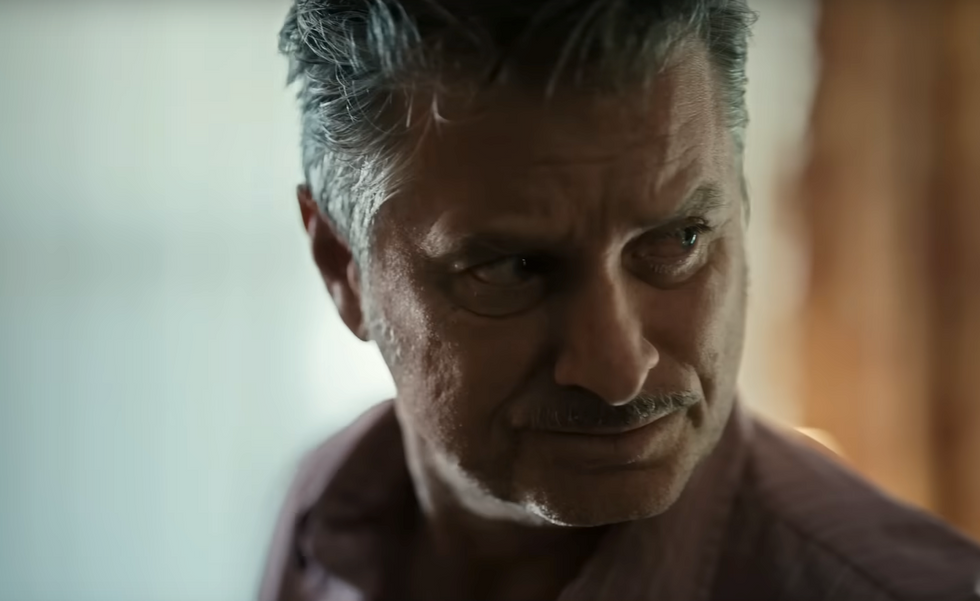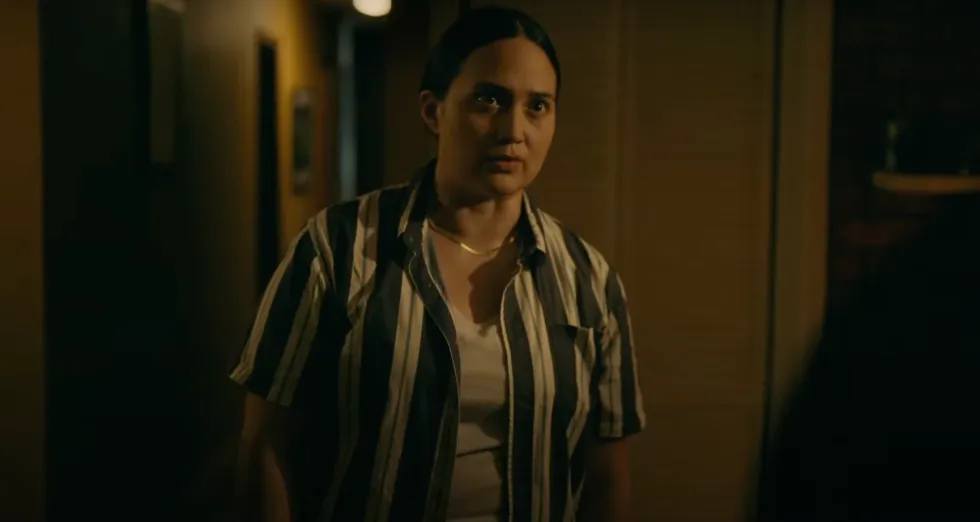
It took way too long for Sundance hit and the Lily Gladstone-starring Fancy Dance to reach wide audiences. Directed by Erica Tremblay, the sensitive indie follows beleaguered aunt Jax (Gladstone) as she and her niece Roki (Isabel Deroy-Olson) set out for an Oklahoma powwow in a last-ditch effort to find Roki’s missing mother. The only hiccup is that Jax sort of took Roki from her white grandparents without asking.
The film impressed audiences at Sundance 2023, but regrettably sat around for over a year while Gladstone was veted for another important and Oscar-nominated role. To see this finally get distribution via AppleTV+ is such a relief to me and other indie film fans.
So we were super excited to be able to connect with the film’s DP, Carolina Costa. The Brazilian cinematographer has established a clear look with her moody, rich visuals. We talked about challenges on Fancy Dance, lessons she’s learned, and more. Enjoy!
Fancy Dance — Official Trailer | Apple TV+
www.youtube.com
Editor’s note: The following conversation has been edited for length and clarity.
No Film School: I know that you started in journalism and you’re from Brazil, but what got you into cinematography?
Carolina Costa: I think I was already interested in photojournalism as a young woman. I wanted to photograph war zones and zones of conflict. It was this idealistic vision I had about the ability of changing reality around me. I grew up in Rio, and that’s just an extremely violent place.
At that point, there were a lot of conflicts going on, and it was actually very common to see young people get shot, and I realized very quickly that I did not have the stomach for that and just didn’t know what I was going to do.
I was studying English in the afternoons, and I heard one of the kids from the class say that his dad was a director of photography. And I was just like, “Okay, that’s a job.” It lit up that bulb inside me. I always loved movies, always watched movies as a big thing at home and for me. I think it was a natural transition then to go into cinematography, because I already had the work with still photography. It was a natural transition and a way of changing reality in a different type of environment, more in the sense of a factory of dreams and sharing stories.
NFS: Did you do any additional training to make that transition?
Costa: I left my last year as a journalism [student]. I left the university in Brazil. I went to London. I did a short course on 16 mm and then left and realized I didn’t know anything. Very soon after I started working, I was a trainee, then I was a clap loader. I was six years in the camera department. I also did a BA in film. It was an art school, so it was very experimental. Having been a few years as a camera assistant and wanting to move into a narrative and being a cinematographer and the head of department, I just didn’t know where to go and what to do to make that transition and have that kind of knowledge.
Everything I learned was on set, asking people. I worked under a gaffer for a year. I worked a lot for the same DPs and just learned from them as I could, in between takes. I felt like I needed more of a technical base that was taught more in an academic environment and less than me just grabbing information as I could on the go. So I applied for AFI, and then I did my master’s degree at AFI in cinematography. When I left that school, for me, it was truly when I felt like I was a director of photography.
 Shea Whigham in Fancy DanceAppleTV+
Shea Whigham in Fancy DanceAppleTV+
NFS: On Fancy Dance, what was your process to prep your crew?
Costa: Everyone knows each other, and it’s a very neat, tight community in Tulsa, OK, which is really beautiful because it’s also growing, with Rez Dogs. So Erica [Tremblay] really wanted to make a movie about that place, because she’s from there, but also with the people from that place.
I was the outsider, so a lot of my job was to get to know the world and get to know the people. I always joke that the artist part of my job is maybe 10 percent. Everything else comes before, and in this case, so much was about figuring out how I can insert myself in a community where already everyone knows each other, and still be able to be head of department. It’s a different type of leadership, and every job is a little bit like that.
And this one, of course, was very specific. I think for me what was important was to have also a diverse crew so that everyone could bring their perspectives. And it felt like the experience was richer, not just in front of the camera but also behind the camera. I think in circumstances like that, it’s hugely important for a head of department to be open. I feel I have this zero-ego policy when I work. Which is the best idea in the room? And they have the experience of the place they live. I was always open to hear their thoughts and for them to bring their expertise and their talents.
I think there’s also this beautiful thing about being the outsider element, which is sometimes you notice things that people that are there are seeing every day and don’t find it quite special. I would be stuck into the weird color of the little lights outside a lot of the houses on the rezervation. I noticed it was like a green-blue, and I was just like, “Oh, this is so interesting. What is it?” And I went to start asking people, and it was for mosquitoes. That became one of the sources of light we used in the movie. That became the color of the outside of the house. Maybe someone that sees it every day is not going to see the poetry in it. So I think it’s a balance of both things.
NFS: What did you use to shoot the film?
Costa: We used ALEXA 65, and we used ARRI signature primes. ARRI was very kind and donated, pretty much donated, close to free. The package came from New Orleans. It was just really lovely.
We really wanted to shoot large format. The idea of having the characters bigger than life and being in the center of their stories and the screen, but also being able to see someone on a closeup and also have the field of view and the context of where they were. So we knew we wanted to shoot large format, but we just didn’t know if we had the budget. And then ARRI really showed up and supported the film.
 Lily Gladstone in Fancy DanceAppleTV+
Lily Gladstone in Fancy DanceAppleTV+
NFS: You brought up a green, but how is blue used in this film?
Costa: Blue was hugely important for us, and it started coming progressively and naturally, organically, through the pre-production. A lot of the time, blue is used in movies to talk about … the past is warm. The present is cold. The opposite of nostalgia. [It] usually talks about a separation, a fish out of water. So, usually, it’s used in a cold approach. For us, it was actually the color of safety.
We started noticing where would be the elements of the blue. It was the blue of the TV, and then it was the little light outside of the house at night; it had a little bit of a tint of green, but it was a blue light. It’s a blue light when they walk into the house. It’s the place of safeness. It’s the blue light when you have a consensual relationship inside a strip club between two Indigenous queer women. That is the place of safeness for them. And it’s kind of a watery blue there. So the blue actually brings intimacy, brings safeness, brings almost a recognition of who they are and where they could go.
And it’s also connected to the clothes of [Roki’s] mom. For Roki’s mom, there was a lot of the strip club, stripper clothes that were inside the suitcase. They were in the blue color as well, and it was also connected to that.
And then the final piece is we wanted the moon to be also an element because it’s so culturally important for Erica and her culture and her ancestors. So that also represented through blue for some of the night exteriors, as well.
 Lily Gladstone in Fancy DanceAppleTV+
Lily Gladstone in Fancy DanceAppleTV+
NFS: Are there mistakes that you see DPs make, especially early on in their work? And how can they avoid them?
Costa: I don’t know if it’s an early thing, but I don’t notice in training young folks right now, it seems that there is an adverse connection. I think because technology is out there, it’s not like a photochemical process that is much more complex. You can go with a small little camera, you can shoot on your iPhone.
So I think it has given freedom to filmmakers, and I think that’s wonderful, but I feel like a lot of young folks are so stuck into, “Oh, it shoots 4K.” They’re so stuck in technology and technical matters.
And, of course, you need to know those to be able to give a base. When it’s supporting a director, you need to be able to bring something to the table, and the director can have ideas, and you can support that with some technical choices. But I feel like people are forgetting that we are, at the end of the day, we are also part of the storytelling process. And I think that is the foremost, most important thing.
Maybe your tech knowledge is not the best, but then get a good team that can help you with that. And you can ask all the questions, but you won’t be able to go all the way around. I think people are forgetting the importance of actually emotional proof and connection to the characters in the story you’re telling.
NFS: Is there anything that you learned personally on this film?
Costa: I think absolutely, so much. I think I’ve made 14 independent features now, 14 or 15. I always prepare, and I say you prepare to throw away your plan.
I think there’s this element of control. You want to control everything in the frame. You want to control all the movement in the camera. The lighting has to be perfect. And I think in this movie, I really had to stop trying to control every other element because a lot of the elements were the natural environment. I just have no control of it.
And I think I had to rely on other parts of myself. They are based on experience, but also I think instinct about how to deal in certain situations. And I think I learned that the hard way. The weather was insane. It was still 110 [degrees] at night. You can’t really use whatever equipment, you can’t put people in unsafe situations. So I think it was just learning to let go and trust that would still make the right choices for the movie, even if we couldn’t control every little piece.
Author: Jo Light
This article comes from No Film School and can be read on the original site.
